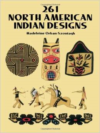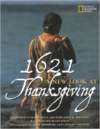Description
World War II marked a crossroads for Native Americans. Twenty-five thousand served in America’s armed forces and forty thousand — including many Native American women employed in defence industries — secured jobs on the home front. The war years divided their past from their future, providing some with the skills and opportunities to enter mainstream society. For other Native Americans, wartime experiences affirmed the value of a renewed, reinvigorated Indian identity apart from the dominant society. This book is the first full account of Native American experiences from the 1930s to 1945 and the first to offer the Indians’ perspective. It begins with their responses to the drift toward war in the 1930s, including their reactions to propaganda campaigns directed at them by Nazi sympathisers. It is also the only ethnohistory of their experiences during World War II. Included are the voices and recollections of Indian men who resisted the draft, of those who fought in Europe and the Pacific, and of Indian women on the homefront. The book is also a careful reinterpretation of John Collier’s career as commissioner of Indian affairs during the Roosevelt years.Townsend argues that Collier’s efforts to preserve traditional Native American lifeways inadvertently provided Indians the resources, training, and services necessary for assimilation in the post-war years.






Reviews
There are no reviews yet.